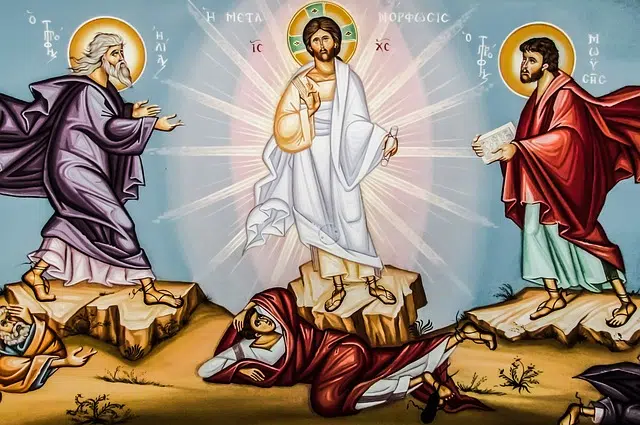
A mosaic from the Franciscan Church of the Transfiguration on Mount Tabor
The verb transfigure comes from the Latin word transfigurāre . Also accepted by the Royal Spanish Academy ( RAE ) as transfigure (without N), it refers to promoting a change in the appearance or figure of something or someone .
Physical or emotional change
Although it can refer to a physical alteration , transfigure also allows us to name a modification in a person's mood . For example: “When she saw her ex-husband enter the restaurant, the woman's face began to transfigure,” “As a plastic surgeon, I try to make my patients look better, but I don't intend to transfigure them nor do I want them to lose their features.” , “Months after the tragedy, I decided to transfigure the pain and turn it into energy to help others.”
As can be seen in these three examples, the verb transfigure is not defined as a mere change , but as one that is very pronounced and impossible to ignore. In the first sentence, it is likely that this reaction has taken place as a consequence of fear of the potential actions of the man who appears unexpectedly. The surgeon, on the other hand, assures that he does not pursue a drastic alteration in the appearance of his patients. The last sentence shows the determination to turn pain into something positive and altruistic.
Take the case of a politician who becomes embroiled in suspicions of corruption . His advisors, faced with this reality, devise a series of actions to transfigure his bad image . Within this framework, they coordinate interviews so that the leader can give his version of the events in the media and organize public events so that he can appear close to the neighbors.
Transfiguration of Christ
In the field of the Catholic religion , the transfiguration is the state of glory in which Christ appeared alongside the prophets Elijah and Moses on Mount Tabor , before the eyes of the apostles James , John and Peter . According to the Bible , Jesus and his disciples go to the mountain to pray and, once there, the son of God begins to be transfigured: he begins to give off a brilliant light and then Elijah and Moses appear. Jesus , in this way, talks with them and is called “Son” by his Father .
This change in appearance that Jesus went through, going from "human" to " glorious ", can be said to have been predicted in chapter 9 verse 27 of the Gospel according to Saint Luke . The theory centers on a quote from Jesus himself, as the closing of a speech he gave to his apostles, in which he assured them that some of them would not like death until they saw the Kingdom of God. Quite often, this statement is interpreted as a prophecy that the end of the world would come before the first generation of Christians died.

The disciples James, John and Peter saw Jesus transfigured
Despite this interpretation , when Jesus said "kingdom of God" he could have been referring to a visible expression of it. And since this is incarnated in himself, the moment in which he was transfigured can be understood as a window into the kingdom of God in the material world. It is thanks to this way of understanding his words that the supposed prophetic nature of said passage is supported. We must also point out that, in the Bible, this speech is found just before the Transfiguration , one more argument to convince us of the prognosis .
The three disciples who witnessed this change in Christ were the three most important. At least this is the interpretation made from reading the Bible, and it is based on the fact that a few verses later the disciples began to discuss the importance of each one, to understand who was in first place. It was then that Jesus explained to them that this position was occupied by the "most insignificant" among them all.
